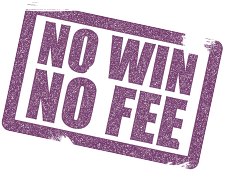This website uses cookies so that we can provide you with the best user experience possible. Cookie information is stored in your browser and performs functions such as recognising you when you return to our website and helping our team to understand which sections of the website you find most interesting and useful.
Claiming Compensation For A Drone Injury
Last Updated on June 17, 2025 by tanya
Claiming Compensation For A Drone Injury
If A Drone Causes An Accident
The use of drones is on the rise which in turn increases the potential for accidents and claiming compensation for a drone injury. This as they are being used for delivery services, inspections and different commercial and leisure activities. There is always the possibility they can end up out of control or come down unexpectedly.
Being hit by a drone may cause serious harm and injuries may range from minor to severe. Therefore, if you have been injured by a drone and there is negligence by another party in this regard, you may be able to file a personal injury claim for compensation.
Typically a personal injury claim must be filed within a three year time limit, although there are exceptions for children under 18 and those who lack mental capacity.
First Personal Injury works with lawyers who operate on a ‘No Win, No Fee’ basis and who can assess if you have a valid claim.
Common Drone-Related Injuries
Drones, especially consumer and commercial models, are typically equipped with fast-moving propellers, heavy batteries, and complex technology. Therefore, when something goes wrong, they may pose a hazard to anyone below. Factors in drone accidents may include loss of control, signal interference, or user error. Here are some common injuries which could result from an accident involving a drone:
Lacerations and Cuts
The high-speed spinning propellers of a drone can cause deep cuts or lacerations if they come into contact with skin. This can be particularly dangerous for children, who might be drawn to a drone without understanding the risks.
Head and Facial Injuries
A drone falling from the sky or colliding with someone can cause blunt force trauma, especially to the head or face. Injuries could possibly include a broken nose, dental damage, concussions, or even more severe traumatic brain injuries.
Eye Injuries
Propeller strikes or debris from a damaged drone can lead to serious eye injuries.
Burns and Electrical Injuries
If a drone catches fire, it can cause burns. Lithium-polymer batteries which common in drones, are volatile and can ignite if damaged.
When Can You File a Personal Injury Claim?
You may be entitled to compensation if you’ve been injured in a drone accident and someone else is at fault. Here’s how personal injury claims work:
Proving Negligence
To succeed in a personal injury claim, you must prove that your injury was caused by someone else’s negligence or breach of duty. Regarding drone accidents, this may include:
- A drone operator flying recklessly or in a prohibited area.
- A commercial operator failing to follow CAA (Civil Aviation Authority) regulations.
- A drone malfunction due to poor maintenance or a manufacturing defect.
The key is to establish that the responsible party failed to take reasonable care and that their actions (or inactions) led directly to your injury.
Time Limits for Making a Claim
In most cases, you have three years from the date of the injury to make a personal injury claim. For children, this time limit does not start until they turn 18, meaning they have until their 21st birthday to bring a claim.
Who Can Be Held Responsible?
Several parties may be liable in a drone accident:
- Private Individuals: Hobbyist drone users who act negligently.
- Companies or Organisations: If the drone was operated for business purposes.
- Manufacturers or Retailers: If the drone had a design or manufacturing defect that contributed to the accident.
- Event Organisers: If drones were used at a public event without proper precautions.
Identifying the correct defendant is essential for your claim’s success.
What Evidence Do You Need?
Gathering strong evidence is essential in a drone-related personal injury case. You should try to collect:
- Photos or video of the accident scene and your injuries.
- Witness statements from people who saw what happened.
- Medical reports detailing the extent of your injuries.
- Proof of financial losses, such as lost earnings or treatment costs.
- Drone details, such as owner, drone model and whether registered.
You should also report the incident to the police or local authority if necessary, especially if it occurred in a public area or at an organised event.
Compensation: What Can You Claim For?
If your claim is successful, you may receive compensation for:
- General damages: Pain, suffering, and loss of amenity.
- Special damages: Financial losses like medical bills, travel expenses, lost income, and costs for ongoing care or therapy.
The exact amount of compensation will vary based on the severity of your injury and its impact on your life. Your personal injury solicitor will be able to advise on this.
‘No Win, No Fee’ Claims
Accidents involving drones may be complex and so it’s advisable to contact a personal injury solicitor. Generally, your solicitor will help you to obtain evidence, deal with the other party or their insurers to negotiate the best settlement for you. Negotiate the best possible settlement. A ‘No Win, No Fee’ agreement means you do not pay anything unless your case is successful.
Reaching out to a trusted claims company can make a significant difference in your journey ahead. At First Personal Injury, we work with highly experienced lawyers who operate on a ‘No Win, No Fee’ basis and will ensure you receive all the support you need. Call us at 0333 358 2345 or contact us online at First Personal Injury to for an initial, no-obligation consultation.
